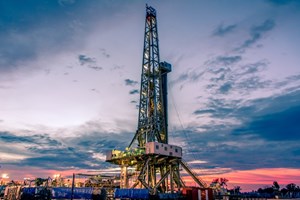Horizonal drilling to help increase oil production from prolific U.S. shale basins
(Bloomberg) – Since the advent of the shale boom, U.S. oil producers have drilled both downward and sideways deep beneath the earth’s surface. But now that the easiest-to-reach crude has been extracted, those companies are testing the limits of their technology even further by boring more than 3 miles horizontally, elevating both the operational risk and the potential rewards.
One in five new wells in the Permian basin of West Texas and New Mexico will rely on subterranean horizontal holes of 3 miles or longer in 2024, double the share this year and up from virtually zero just two years ago, according to research firm Rystad Energy. U.S. producers including Pioneer Natural Resources Co. and Diamondback Energy Inc. say the new technique will be key to future oil output for a U.S. shale-oil industry that’s starting to show its age.
“It is a riskier game,” said Mike Holcomb, Chief Operating Officer for Patterson-UTI Energy Inc., one of the biggest U.S. contractors hired to drill longer wells. “If something happens and you lose a lateral, you’ve lost 3 miles of production versus 2.”
Following the widespread adoption of techniques like fracing and sideways drilling in the early 2000s, U.S. shale became the world’s leading source of oil growth. Now that the best acreage has been tapped, the shale patch is struggling to keep up. Some operators trying to wring out hard-to-reach hydrocarbons are going so far as to drill wells in zig-zag and U-turn patterns under miles of rock in hopes of getting more bang for their buck.
New techniques can sometimes lead to equipment failure: Flexible tubing can buckle in the drilling process, and drill bits can wear down deep beneath the earth’s surface. In addition, if the pockets of oil aren’t exactly where they’d been modeled, a 3-mile well is a costlier outlay for what could ultimately be a dud. Advocates say the longer wells promise lower fixed costs, better productivity and the ability to access oil that might otherwise have been out of reach.
“It’s a risk-reward decision, because if something bad happens at 18,000 ft, that’s an expensive mistake,” Kaes Van’t Hof, President of Diamondback, said on a call with analysts. The company has even gone sideways deep under the home of company Chief Travis Stice. So far, he said, the results of the longer laterals have been positive. “The drilling guys can do it, there’s no doubt about that.”
Pioneer, the largest independent producer in the Permian, has an inventory of more than 1,000 future wells that run at least 15,000 ft horizontally — or about 2.8 miles — and some even exceed 18,000 feet. That’s about 3.4 miles, or the length of 50 football fields. The longer horizontal wells generate more oil, cost less per lateral foot and require fewer vertical holes and fracing workers, Pioneer’s President and incoming Chief Executive Officer, Rich Dealy, said on an August conference call.
Servicers, the hired hands of the oil patch, are eager to take on these kinds of risky, big-ticket jobs. An average 2-mile lateral well costs $6.5 million, all in, compared to around $9 million for a 3-mile lateral well, according to data from Bernstein. Pioneer and Diamondback didn’t say whether they’ve had any problems when they extend the laterals or how much they’ve spent, though Dealy said on the call that the roughly 3-mile laterals result in capital savings of about 15% per foot. Longer horizontals are particularly popular in the Marcellus shale of the U.S. Northeast, as well as the Midland basin of the Permian in Texas.
“It takes more horsepower on the surface to pump,” Thomas Johnston, Chief Operating Officer of ShearFRAC, a drilling technology company. “And it costs more money to put the casing in for the well. So, there’s all these extra costs up front.”
American drillers have been scouting for years for new ways to extract oil from a stagnating market, including producing in more populated urban areas. Still, the steep drop in output from U.S. shale wells is turning out to be worse than expected, forcing oil drillers to work even harder to keep production from slipping, research firm Enverus said in its latest report.
“With the cost inflation, wells are getting more expensive,” said Rystad analyst Alexandre Ramos-Peon. “The only way you can still be making a handsome profit on this is by leveraging all the known techniques to get the most bang out of your buck.”
For now, drillers continue to push outward, with some of Pioneer’s wells now nearing four miles. Time will tell how much further drillers can go.
“We would always say we’re going to stop when the well tells us to do so,” said Holcomb, the Patterson-UTI executive with more than 40 years of experience in the oil fields. “And then over the years, we’ve learned as we’ve gone, and we’ve continued to push the limits out.”



